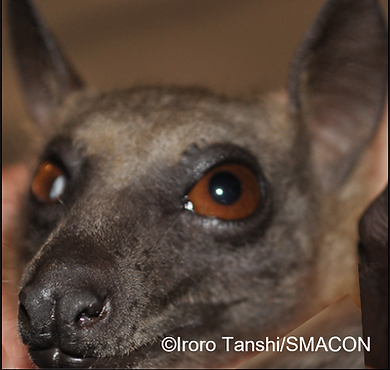
Cave protection.
Protecting threatened bat species and the communities that share their habitat
The Challenge
Across West Africa, fruit bats are hunted for food and traditional medicine. Heavy hunting, especially in caves where bats roost, puts entire colonies at risk and increases the chance of disease transmission.

Short-tailed Roundleaf Bat (Hipposideros curtus):
An endangered leaf-nosed bat with a global population estimated at under 1,500 individuals. It survives only where old-growth forest and undisturbed cave habitat remain, mainly in parts of Nigeria, Cameroon, and Equatorial Guinea (including Bioko Island).
Major threats include wildfires started by smallholder agricultural burns that spread into forest, and disturbance of cave roosts (often linked to hunting of cave-roosting bats).
.png)
Egyptian Fruit Bat (Rousettus aegyptiacus):
Depends on caves and cave-like habitats; disturbing a single roost can collapse whole populations.

Upland Horseshoe Bat (Rhinolophus hilorum):
In Nigeria, the species is known only from the Obudu Plateau, i.e., the Cross River National Park and Becheve Nature Reserve. Our acoustic monitoring suggests that there may be a small or vagrant population in Afi Mountain, this remains to be confirmed through hand captures. It is also suspected to occur in highland areas of the Gashaka Gumti National Park.
This species is susceptible to climate change and threatened by wildfires from pasture land, this high elevation specialist is between a rock and a hard place.

African Straw-coloured Fruit Bat (Eidolon helvum):
Forms some of the largest mammal colonies on Earth, yet intense hunting at seasonal roosts is driving local population declines.
Our Approach
We combine science and community action to protect these species:
-
Monitoring & Data – Tracking hunted bat populations and key roost sites to identify hotspots of decline.
-
Community Partnerships – Working with local communities to create alternative livelihoods and reduce hunting incentives.
-
Awareness & Education – School programs and community outreach shift perceptions, highlighting bats’ vital role in pollination and forest regeneration.
See how our Alternative Livelihood Program is protecting Rousettus aegyptiacus and Eidolon helvum. Read our blog for detailed insights.
